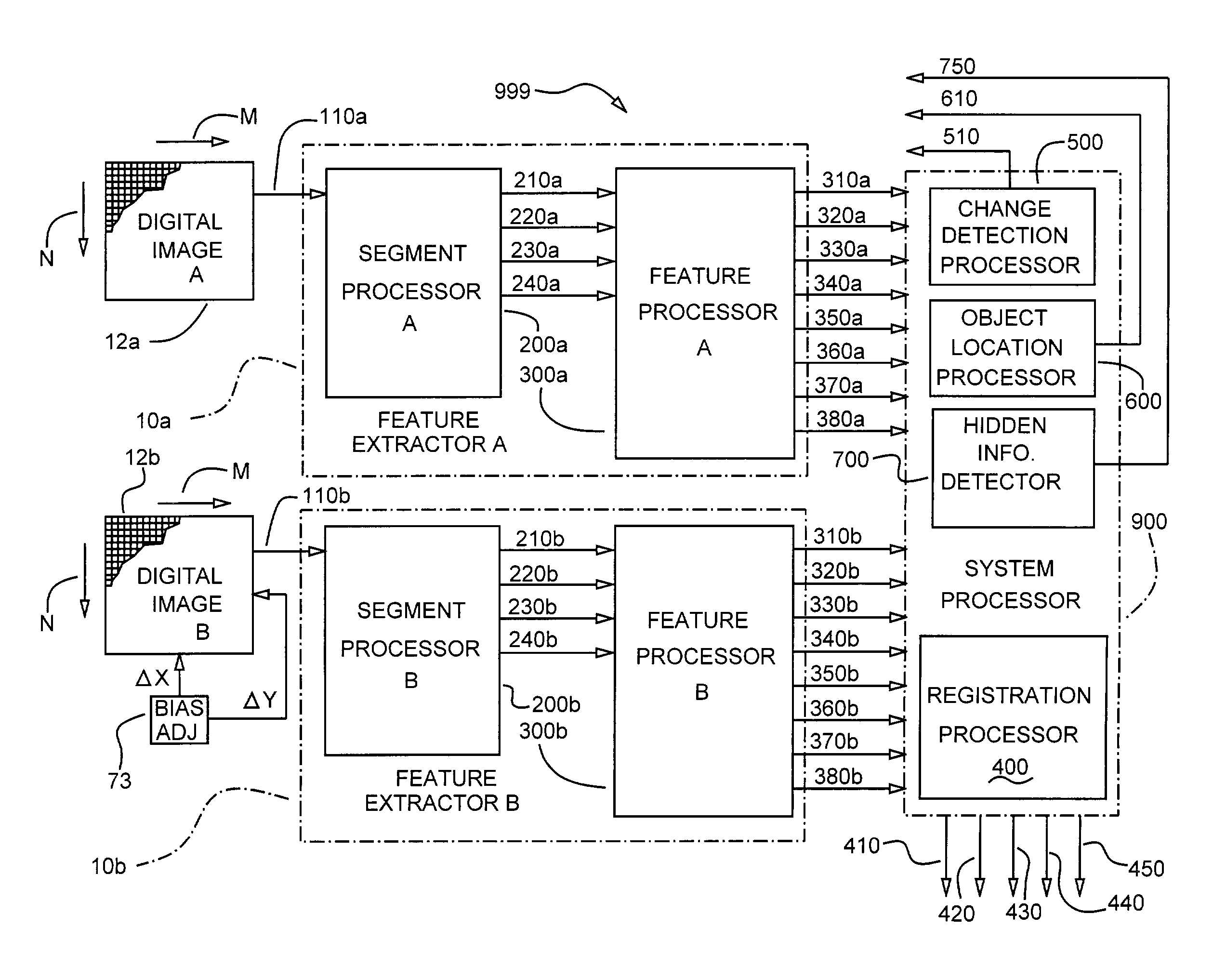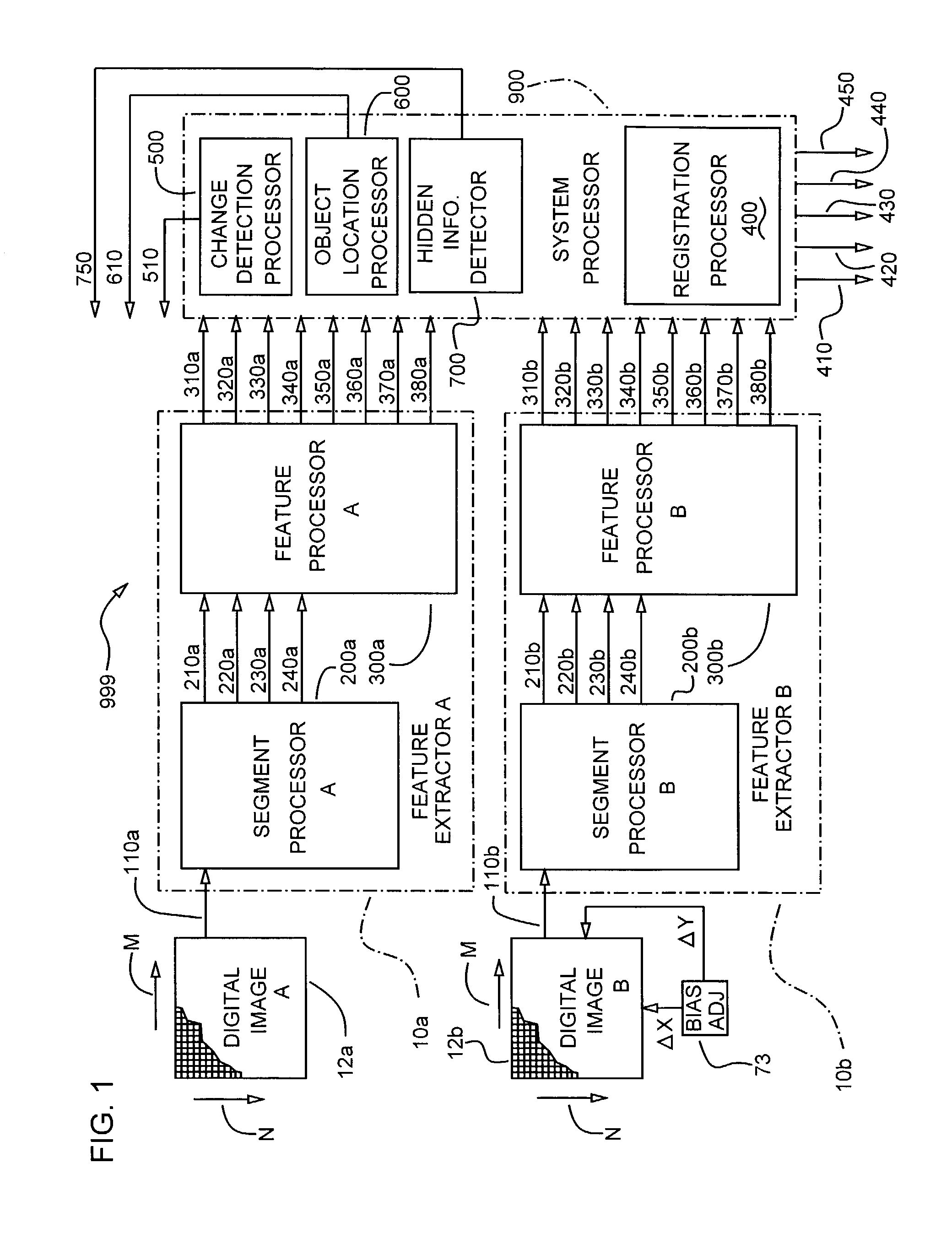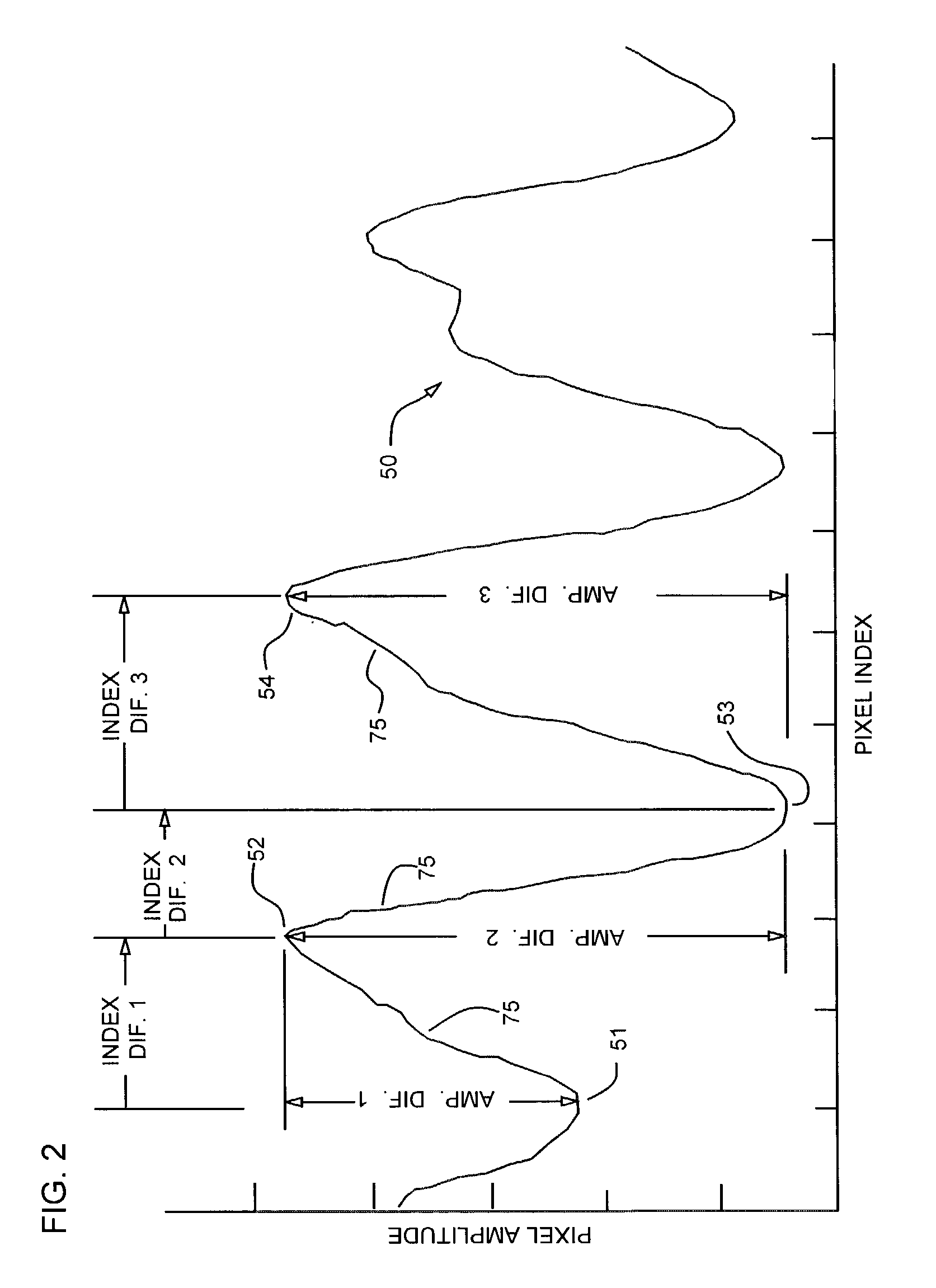Apparatus and method for characterizing digital images using a two axis image sorting technique
a two-axis image sorting and image technology, applied in the field of digital image characterization, can solve the problems of specialized operator expertise, lack of effective automation, slow and computationally expensive systems, etc., and achieve the effects of convenient automation, high accuracy, and low cos
- Summary
- Abstract
- Description
- Claims
- Application Information
AI Technical Summary
Benefits of technology
Problems solved by technology
Method used
Image
Examples
second embodiment
[0035]In the invention the equations for calculating the column and Row Difference Coefficients may take the form:
D(c)=K1[Ma(c,A)−Ma(c,B)]+K2[Da(c,A)−Da(c,B)]+K3[Mt(c,A)−Mt(c,B)]=K4[Dt(c,A)−Dt(c,B)] {Equation 3}
D(r)=K5[Ma(r,A)−Ma(r,B)]+K6[Da(r,A)−Da(r,B)]+K7[Mt(r,A)−Mt(r,B)]+K8[Dt(r,A)−Dt(r,B)] {Equation 4}[0036]Where the quantities (K1-K8) are weighting coefficients chosen to suit a particular application of the technique
[0037]Again, there are four variations (V1-V4) on the mathematics, any or all of which may be applied, as follows:[0038]V1: Any or all quantities in brackets [ ] may be converted to absolute values[0039]V2: The Image A and Image B quantities for any or all axis functions may be interchanged, for example, [Ma(c,A)−Ma(c,B)] would become [Ma(c,B)−Ma(c,A)], and so forth[0040]V3: Any or all of the quantities in brackets[ ] may be replaced by a value of 0, eliminating that particular axis function from the calculation[0041]V4: Any or all of the axis functions may be re...
third embodiment
[0042]In the invention the column and Row Difference Coefficients may be calculated by use of the relations:
D(c)=[Ma(c,A) / Ma(c,B)−1][Da(c,A) / Da(c,B)−1][Mt(c,A) / Mt(c,B)−1][Dt(c,A) / Dt(c,B)−1] {Equation 5}
D(r)=[Ma(r,A) / Ma(r,B)−1][Da(r,A) / Da(r,B)−1][Mt(r,A) / Mt(r,B)−1][Dt(r,A) / Dt(r,B)−1] {Equation 6}
[0043]Also, with this embodiment there are four variations (V1-V4) on the mathematics, any or all of which may be applied, as follows:[0044]V1: Any or all quantities in brackets [ ] may be converted to absolute values[0045]V2: The Image A and Image B quantities for any or all axis functions may be interchanged, for example, [Ma(c,A) / Ma(c,B)−1] would become [Ma(c,B) / Ma(c,A)−1], and so forth[0046]V2: Any or all of the quantities in brackets [ ] may be replaced by a value of 1.0, eliminating that particular axis function from the calculation[0047]V3: Any or all of the axis functions may be replaced by a normalized version of that axis function, which is calculated by dividing each value in the...
fourth embodiment
[0048]In the invention a weighted sum of quotients is used in the calculation of a Column Difference Coefficient and Row Difference Coefficient calculation for two images, A and B. In that embodiment the column and row Difference Coefficients take the form:
D(c)=K1[Ma(c,A) / Ma(c,B)−1]+K2[Da(c,A) / Da(c,B)−1]+K3[Mt(c,A) / Mt(c,B)−1]+K4[Dt(c,A) / Dt(c,B)−1] {Equation 7}
D(r)=K5[Ma(r,A) / Ma(r,B)−1]+K6[Da(r,A) / Da(r,B)−1]+K7[Mt(r,A) / Mt(r,B)−1]+K8[Dt(r,A) / Dt(r,B)−1] {Equation 8}[0049]Where the quantities (K1-K8) are weighting coefficients chosen to suit a particular application of the technique
[0050]Four variations (V1-V4) of this embodiment are:[0051]V1: Any or all quantities in brackets [ ] may be converted to absolute values[0052]V2: The Image A and Image B quantities for any or all axis functions may be interchanged, for example, [Ma(c,A) / Ma(c,B)−1] would become [Ma(c,B) / Ma(c,A)−1], and so forth[0053]V3: Any or all of the quantities in brackets [ ] may be replaced by a value of 0, eliminating...
PUM
 Login to View More
Login to View More Abstract
Description
Claims
Application Information
 Login to View More
Login to View More - R&D
- Intellectual Property
- Life Sciences
- Materials
- Tech Scout
- Unparalleled Data Quality
- Higher Quality Content
- 60% Fewer Hallucinations
Browse by: Latest US Patents, China's latest patents, Technical Efficacy Thesaurus, Application Domain, Technology Topic, Popular Technical Reports.
© 2025 PatSnap. All rights reserved.Legal|Privacy policy|Modern Slavery Act Transparency Statement|Sitemap|About US| Contact US: help@patsnap.com



